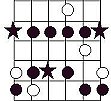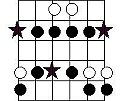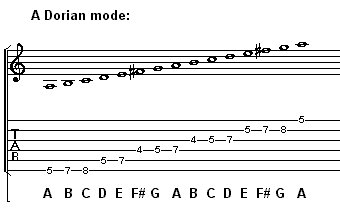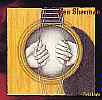If you are new to modes, and are worried that this will be too complicated, let me re-assure you with some learning tips that have worked for me and my students.
Start with what you know! All the modes we are going to talk about can be learned in relation to everyone's favorite - the pentatonic scale! And in general, you will learn better and retain more if the new topic is connected, related or expanded from something you already know very well.
Start small, build bit by bit! Learn one thing at a time, and learn it very well. Memorize it, play it, get comfortable with it. This is the only way you will ever gain the confidence to actually put it to creative use. And from a such a solid foundation, it will be easy to gradually add more and more knowledge.
Put what you are learning into practice right away! With modes I will show you how to get started using them immediately, even before you have learned everything you think you need to know. But that's okay; the sooner you can hear and play what you're learning, the sooner you will really know it. Your own ears and hands are your most powerful teaching aids!
So, what is a mode? I am going to give an incomplete answer - don't sue me! This is just to get the ball rolling, to whet your appetite to learn more, later.
A mode can be thought of as a pentatonic scale with a couple of notes added. Perhaps you have learned basic minor key soloing this way - if so, you have already learned one mode and didn't know it. The traditional minor scale is also known as the "Aeolian mode". If we take that scale and change one note, we get the "Dorian mode." (Please don't keep saying "why!")
Check out the examples below.




See the pentatonic scale notes in black? This is to indicate that both Aeolian and Dorian have the same pentatonic scale as their framework.
So what's the difference? Only that in the Aeolian there's and F, and in the Dorian there's an F#. So what, no big deal, right? Wrong. All the modes are about subtle differences like that. This is another part of the definition of modes:
A mode is a slight variation on a major scale or minor scale.
Now put it to use:
Play each of the two patterns above against a rhythm of just an A minor chord, no changes. Or just alternate playing each mode with playing an A minor chord, back and forth, several times. Listen for the subtle difference between Aeolian, with a F, and Dorian, with an F#.
This is the smallest nutshell I can put it in:
Choose any minor(or minor7) chord, play it, then play these scale patterns positioning them so the keynotes (the stars on the scale charts) are the same as the root of your chosen chord. This links one good scale pattern for each mode directly to the chord it goes with, and is a good way to get the basic sound into your ears and under your fingers. Next time we'll go further into the question of knowing when to use each mode.
Okay, I know that this lesson probably raises as many questions as it answers. There is indeed a lot to be learned about modes. What I am trying to demonstrate is that you can't learn it all in one session, and you probably shouldn't try.
What you could and should do is seek out every lesson on modes you can find, and get an explanation from anyone who can teach you about them. You will see that there as many different appraoches to learning modes as there are guitar teachers. And that's perfectly OK. But always come back to learning a little at a time, and make connections with scales and chords you know. You'll get more out of it, I promise.
Ben Sherman is a guitarist from Maryland who has over 27 years playing experience. He has also been giving private lessons for many years, helping guitarists of all levels discover the joy of music-making.
His debut CD is entitled "First Light", which features eight electric rock/fusion numbers and two acoustic pieces.
